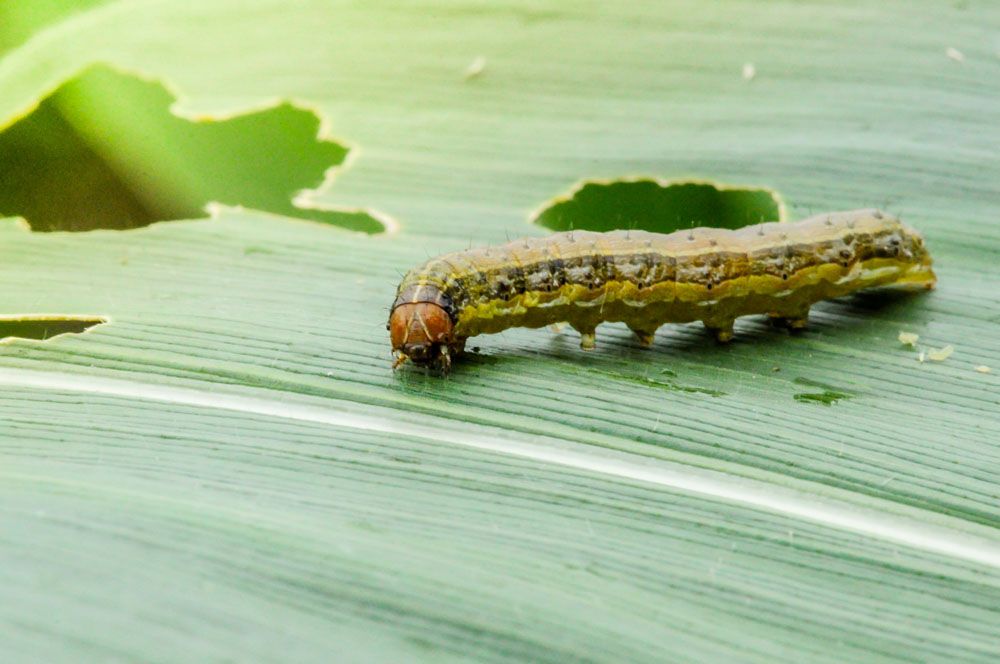
Fall Armyworm – Spodoptera frugiperda
Fall Armyworm – Spodoptera frugiperda
Common Name: Fall Armyworm
Latin Name: Spodoptera frugiperda
Appearance:
- The fall armyworm moth has dark grey, mottled forewings with pale and dark splotches and a noticeable white patch towards the end of each. Larvae that have just hatched are green and move in a looping pattern.
- The larvae of the fall armyworm have smooth skin and range in colour from pale tan or green to nearly black. Their backs feature three yellow-white hairlines. A larger black stripe runs along either side of their bodies, next to the yellow lines. Next to it is a broad, wavy yellow band with red splotches.
- Larvae are roughly 1-1/2 inches (38 mm) in length when fully mature. Look at the insect’s head to distinguish this larva from other armyworm species or corn earworms. The head of the autumn armyworm bears a prominent white, inverted Y-shaped suture between the eyes.
